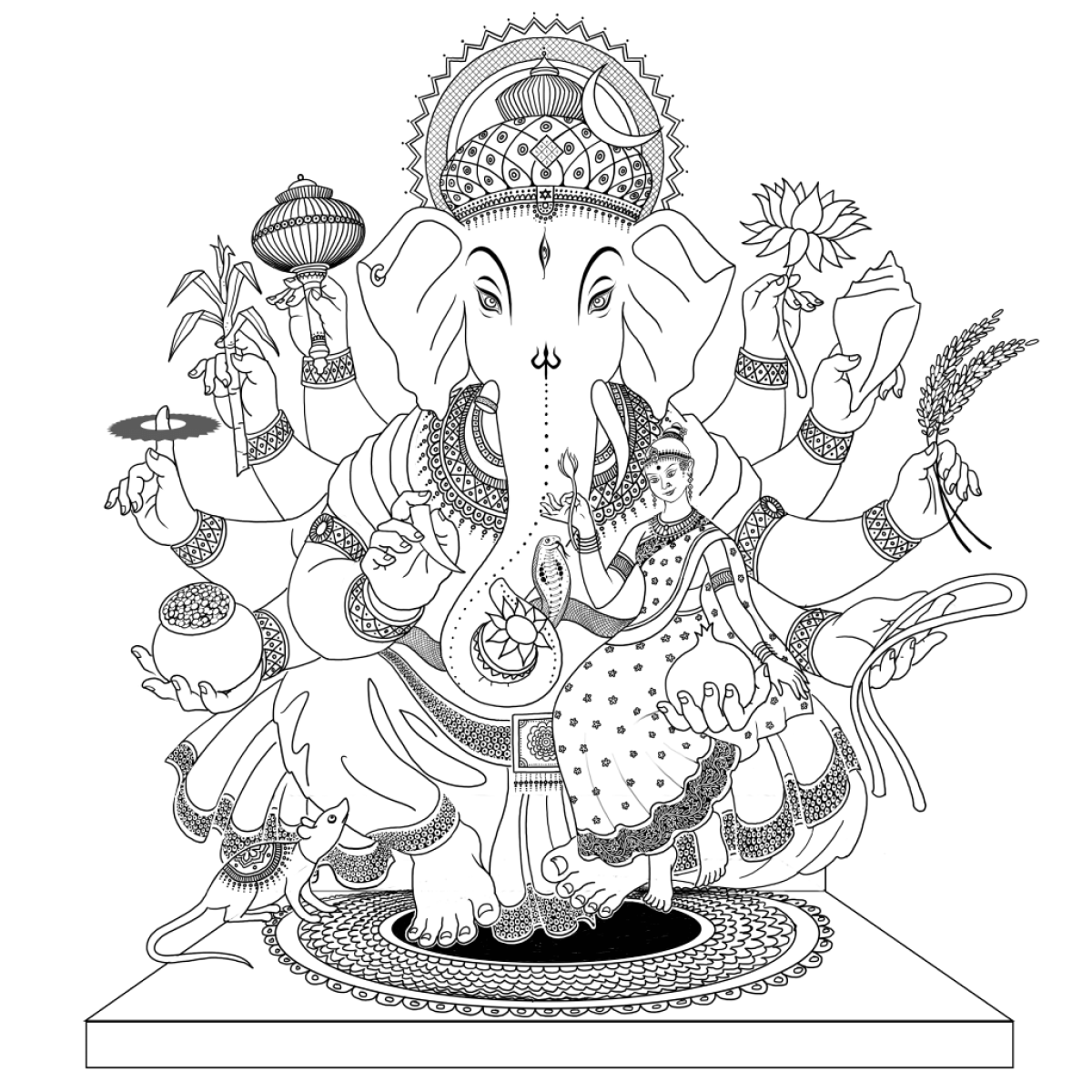
Culture, as Loren Eiseley said, is stand-in Nature; a human substitute to the laws of Nature which broke down when man discovered technology, came out of the food chain and broke the natural order. Culture through its laws and conventions tries to mimic and safeguard natural laws, and at the same time, in a society like Bhāratavarṣa, tries to spiritually elevate man while respecting natural physical constraints.
Here, this Nature-conducive culture takes the form of Dharma. Dharma becomes manifest to us in the form of tradition which takes tangible forms as customs and rituals. The culture which arises out of this practice of tradition talks in the language of symbols. And these symbols are conveyed through art and literature. While art encodes this wisdom, the act of decoding its meaning leads the aesthete, the onlooker, onto a cultural journey.
Going on this journey he comes across various stories; epic and short, religious and folk. It is a meaning making process designed to make the most abstract of ideas and rhythms become tangible.
These stories pack great cultural wisdom in small capsules of tales, anecdotes, idioms, phrases and aphorisms. This is how Indian Knowledge Systems filter down to every nook and corner of the society through the agency of cultural storytelling. It is the most powerful way of spreading cultural wisdom and making everyone fall in harmonious rhythm with Nature and with our own selves.
And it does not involve any top-down method of orthodox imposition against ‘heretical practices’. In an ideal setting this filtering down of culture would ensure the demand generation for a culture-conducive policy. But something has broken down in our contemporary times, which has disrupted this civilizational process.
India like all other great civilizations was more of an oral culture. And it had deep implications. As opposed to the ‘People of the Book’ and their insistence on passing knowledge only through written Scripture, an oral culture relied on oral and personal means of communicating culture and its wisdom.
Through the agency of great kathā vācakas, roaming bards and mendicants the stories contained in the Vedas and scriptures were taken to every part of the country. And then these stories were imbibed and embodied by members of the family who would transfer this encapsulated wisdom to the next, and to the next generation, in the humble and cozy setting of a home.
It is this process of cultural continuity which has broken down. Modern civilization is not conducive to an oral culture and often ignores it completely and in the process denies its very existence. Modern education, state and market all favor written knowledge over oral culture. Modern living and housing make it impossible for the old story-tellers to reach everyone.
The atomization of society and family means that the story-tellers at home, the grandfathers and grandmothers, are no longer there to pass on cultural wisdom to the coming generations, to their grandchildren.
This is how a beautiful tradition withers. The link with the past disappears, the communication of cultural wisdom through story-telling breaks down and we arrive upon a society of atomized individuals at the mercy of global institutions and universalizing theologies.
The infusion of this cultural wisdom in personal life will lead to psychological comfort and an ability to find solace in hardships and adversity. Culture so infused will be the cushion of the individual against the vagaries of life. At the level of society and State, this would result in a culture-conducive policy and consequently a Nature-conducive culture resulting in sustainable living, personal well-being and ecological harmony.